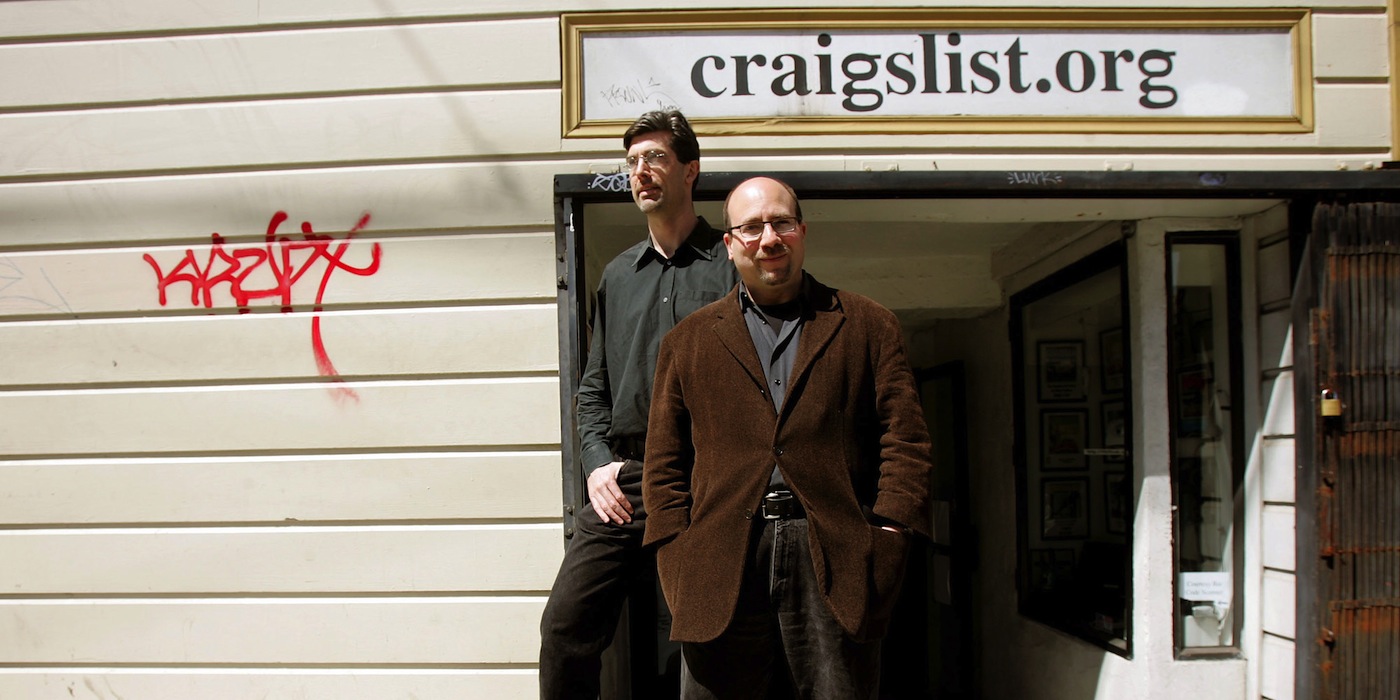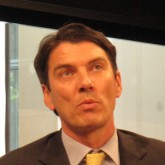Chapter 13
The Advertising Rollercoaster

One problem for the news business is that it has always really been the advertising business. But very few in the news business want to admit that or talk about it from that perspective.
In a 2008 interview, NBC’s Jeff Zucker (now head of CNN) famously talked about “exchanging analog dollars for digital pennies” (later upgraded to “digital dimes”), and that continues as a problem, especially with the growth of programmatic ad buying and the precipitous decline in average digital display advertising rates.
To step back a bit, though — as the advertising markets returned to health following the 2001 recession, the main event for many traditional printed news companies was the continuing downward spiral of the industry’s highest margin earner: classified advertising. Tony Ridder’s worries from the early ’90s were now becoming stark reality. And even though Tribune and Knight Ridder were making a success of vertically targeted web businesses such as CareerBuilder and cars.com, it ultimately wouldn’t prove enough to fight the riptide. Kathy Yates of Knight Ridder (whose Mercury News, you may recall, was the nation’s second-largest classified vendor) witnessed the deep internal divides up close.
There was a cultural war that went beyond The Innovator’s Dilemma and compounded the issue. I think that, more than anything, is why there was a lack of passion in myself among others to become the world’s best classified advertising vehicle.
It just didn’t speak to the higher purpose that so many people were in the industry to try and nurture. That created a disincentive for us to really be doing the kinds of things that we would need to do — to, say, invest all of our energy in fixing the classified problem.
Had we done that, would we have been able to do it? I don’t know. It’s pretty hard to compete against free [like on Craigslist], but you can certainly build off of the traffic that comes from having a free classified product, and we should have known that.
We knew that the little liner ads in there attracted a lot of readership, attracted a lot of loyalty, and brought people to the newspaper. There were a lot of people that had subscribed to the paper just for that. But we didn’t embrace that, and I think that was a cultural problem that existed in the industry. For all of us.
As local newspapers struggled with the demise of classified advertising, overall display advertising was doing better, though not at the rates typical of a recovery. Total print advertising would come back slightly from its nadir in 2002 of $139.5 billion to $152.3 billion by 2005, according to MagnaGlobal. Hardly a robust recovery.
In the online ad arena, however, the revenue picture was starting to look much improved. From its low of $9.1 billion in 2002, Internet advertising would grow robustly to $23 billion in 2005. Already, $9 billion of that would go to paid search. The majority of the rest went to just five sites, led by Yahoo. Print-based media companies, meanwhile, were rapidly becoming “unbundled,” as Alan Spoon, the former Washington Post executive turned venture capitalist, puts it.
Think about the bundling of advertising. You knew where to find the tires in the newspaper. Maybe not in The Times, but in any local newspaper, you knew they were going to be in the sports section. You knew where to find the white sales in January. They were in the A section, even if you didn’t know where Sudan was. Now if you’re thinking about white-sale items at a good price, you’re thinking about Amazon. You’re probably going to some auto website to think about tires, with price discovery there. I’m talking largely newspapers, but it affects other media, too. Part of the information that people valued was the messaging from the advertisers. That became unbundled, together with ESPN doing what it’s doing in sports.
Nick Denton describes how this process played out at Gawker. Soon after he started the site, he took a banner ad off another website and stuck it on Gawker.
I wanted to establish the principle that this is a commercially supported website. Don’t come and freak out later if we put banners on this. It was from the beginning.
Then you hired a sales staff?
Gabriella [Jackomen] was taking sales orders. We were order taking for a long time. We were order taking right through until Andrew Gorenstein, who came from Conde Nast, joined us about two years ago. He would argue that we were order taking pretty much until he came on. We had hot sites. People wanted to advertise. We had hot sites and hot categories. Consumer electronics — we had the hot gadget site.
That’s a nice place to be.
It’s a nice place to be. We got to choose. We got to take [content ideas from] Wired magazine. We chose the highest value bit of it. That’s the big problem the newspapers have had. Start-ups and new ventures come in and pick off the best bits. They leave The New York Times with the Baghdad bureau.
If it wasn’t injury enough that a large portion of digital advertising dollars was going to paid search — and of that most, as we’ve said, went to Google — digital display advertising also started to veer away from the control of the mainstream media outlets. So by 2008, paid search, according to MagnaGlobal, accounted for $24 billion out of a total Internet advertising market of $53 billion — or almost half the total spend — with Google taking most of that. Further, the Google methodology of connecting users and marketers was proving so effective, it was often viewed by those marketers as a cost-of-sale expense, rather than an advertising investment. This encouraged people with ad budgets to look for more ways to throw money at Google.
Tim Armstrong, now CEO of AOL, but then Google’s first head of ad sales, recalls the company began to expand beyond text advertising to claim a share of display, or banner, ad budgets.
They couldn’t spend the full amount of money they wanted to spend…. Our original intent was just to do search ads, and then what happened was, two or three years later, we realized customers were coming to us saying, “Hey, it’s so efficient to put all my budget into one system and have it run on search in other places. Can I put my display budget in and do that?”
We tried to build our own display system, but we were in ongoing talks with David Rosenblatt from DoubleClick. Essentially, it made sense for us to, instead of building it ourselves, [to] buy DoubleClick because DoubleClick had built all the piping. People don’t realize what the ad business is. The ad business isn’t about sales on top and selling advertising. What it’s really about is putting piping into all the major customers, into their billing side and [the] finance side. DoubleClick had done that. For Google to replicate that would have taken years, so we bought DoubleClick [in 2007 for $3.1 billion].
We essentially came up with a new strategy chart, which showed on one side of it…we would basically have all the advertisers. In the middle, we’d have a Google system, and on the other side, we would actually be agnostic towards what type of ads and what type of revenue we took…. We launched the Google TV business, the radio business. We actually ran ads in print. We used the Google system to actually buy print ads and put them in magazines and we tested that.
We really thought very big and broad about how do you have one system serve the whole ecosystem of advertising.
Actually, the use of technology to place web ads on different sites was not new. DoubleClick had been founded during the early days of web advertising, and then dozens of advertising networks sprung up during the dot-com boom. Most went out of business in the bust. One that stood out was a 1998 startup called advertising.com, founded in Baltimore by brothers Scott and John Ferber. By 2004, advertising.com had not only survived the Web Winter, but had assembled thousands of websites into a vast network that allowed marketers to target and buy advertising more efficiently. AOL acquired the company that year for $435 million, precipitating a flood of venture money into so-called “adtech” companies.
With all those companies stirring the pot of the web ad ecosystem, and Google running DoubleClick, news publishers were now faced with another dilemma: Should they remain the sole sellers of their inventory, or give their unsold — or remnant — inventory to ad networks to peddle? Scores of publishers, such as About.com and iVillage, offloaded their remnant slots to the networks. Some tried to start their own. But, among others, Gawker Media’s Nick Denton refused to play the network game.
We never allowed networks in. If you want to buy the Gizmodo audience, there’s one place to buy the Gizmodo audience. The front page would have value. Only one advertiser can be on the front page of Gawker on a particularly hot movie release weekend. We have advertisers who need to lock in those dates.
…You know when people talk about the unlimited supply of inventory on the web? That’s the biggest load of bullshit I’ve ever heard. It’s ridiculous. It’s like saying there’s an unlimited supply of paper in the world. Yes. It’s irrelevant. What matters is that you create opportunities that are unique. The front page of a site, on a day, if it has an exclusive sponsor on that day, that’s a unique opportunity.
Only one person can have this. Either it’s going to be HBO or Showtime. If you want that particular date, you better lock it in soon. There’s a limit to how much discount we can give you. That’s how we get pricing power. I don’t see the web as any different than any other medium that’s ever existed.
I’m just going to give you the argument back. The argument back is that, unlike any other medium that ever existed, you’ve got a player called Google that looks at all the behaviors across the Internet, including in its own search engine, and can give you the best parts of the Gizmodo audience for a third, a half, maybe even a quarter of the price that you charge. Those banners may exist on other sites, but the targetability, the measurability is incredibly precise. That’s the other side of the argument.
When we don’t run the networks, most of the networks can’t identify who the best Gizmodo readers are. We’ve kept those networks out. We’ve kept them out for a reason. We have a monopoly on the supply of our readers, to advertisers.
From the resurgence in Internet advertising beginning in 2003, to the Great Recession that began at the end of 2008, virtually all the swimmers in the news flow had a swift current at their backs, even if not in equal force and even with Google soaking up so much of the overall ad spend. Most news websites grew ad revenues in double digits year after year during this phase (albeit off relatively small bases of revenue with problematic margins), and overall newspaper advertising remained steady, growing slightly from $101 billion in 2003 to $108 billion in 2008, according to MagnaGlobal. Then, in the fall of 2008, came a fierce reversal in the riptide: the global economic collapse and ensuing financial meltdown.
Premium publishers attempted to hold on to high rates for their web advertising inventory, but it was a mostly futile effort. The average cost to buy online banner ads (so-called CPMs, or the cost for every 1,000 audience impressions) stood at just $3.50 for desktop inventory and a mere $0.75 per CPM impressions on mobile sites in 2012, according to KPCB. Effectively, Jeff Zucker’s digital dimes were rapidly being devalued back into digital pennies.
As a result, by 2012, some premium publishers began creating their own (so called “native”) advertising solutions, moving away from the standard banner units that had defined Internet advertising since the mid-’90s. Often, these publishers were criticized for violating what had been a sacrosanct “church (newsroom)/state (commercial)” divide. Jonah Peretti explains and defends this movement at Buzzfeed:
I don’t think banner ads are a solid enough basis for it [the business model.] And just like this shift [toward social distribution of content] has happened on the editorial side, the same shift is happening a little bit later, in advertising, where the leverage you get from massive networks can mean the same piece of creative and the same size media buy can get much more distribution.
The church/state separation is very important. And [editor] Ben Smith is very rigorous about it. I agree wholeheartedly that church and state is really important. The thing I don’t like about the church/state division, as someone who sits above the divide, is that it can lead to a two-tiered system where the journalists are seen as the whole purpose and the greatness of everything, and that the people in advertising are seen as a necessary evil that are doing things like, “Well, you kind of have to do it, but it kind of sucks. In an ideal world, there would be no advertising.”
Moreover, as publishers witnessed the banner ad becoming a commodity, they moved rapidly into new forms of business development. The Atlantic is just one place where what once was valuable ad placement on premium content has significantly decreased in value.
On a straight, banner contextual impression, sure, that’s probably the case [declining value], and I would concede the argument to you. But when you’re talking about going to an advertiser with an idea that is customized to that advertiser, that comes from an organization that understands its brand and its audience extremely well, that idea is actually expressed across a series of live events, a series of video products, a series of print products.
You talked about marketing services. What does that mean?
That’s the idea. In a sense, that’s the creation of the idea. I think it’s the media company as agency, which is effectively what has happened to us. Atlantic Media is an idea-based marketing agency, digital marketing agency, is another way of describing our company. That multi-touch, multi-platform, multifaceted, customized, bespoke, ideas-driven initiative that in the past would have come from Ogilvy & Mather or from an ad agency is, in fact, coming from us directly, cutting out the agency, going directly to the client. That’s not replicable by programmatic [machine-driven buying]…
…another way and a flippant and maybe humorous way of looking at it is, we look at programmatic and, just entrepreneurially, we say, “What can we do that programmatic can’t do that adds value?” It’s like your back’s against the wall. They’re coming at you and you’re like, “Okay, [but] I’ve got to reinvent myself to do something that those machines, those algorithms, can’t do that delivers value to the advertiser.
There’s a lot of things, if you put your thinking cap on, your innovation cap on.
In general, print newsrooms didn’t innovate nearly fast enough to cope with the combination of declining ad values and an economic meltdown. Television outlets fared better, at least economically, continuing to garner the largest share of total marketing expenditures from advertisers, while holding on to more brand advertising dollars, according to Nielsen. Moving ahead, however, it will certainly take significant innovation to alter the strong current of digital advertising away from print and, as audiences continue to migrate online, eventually away from television as well. As of 2013, the disrupters are winning definitively in this area, and we are only now beginning to see how social media will come into play and alter the flow of things even more.

